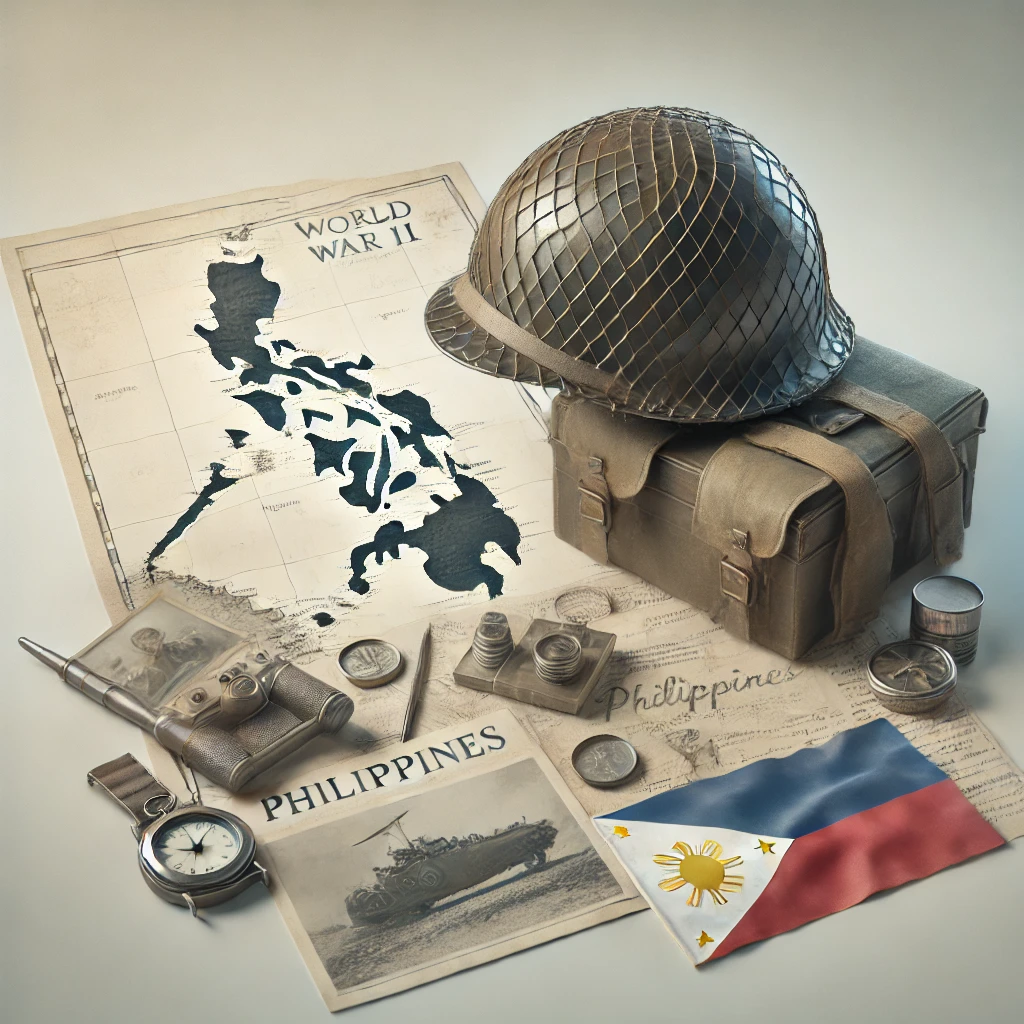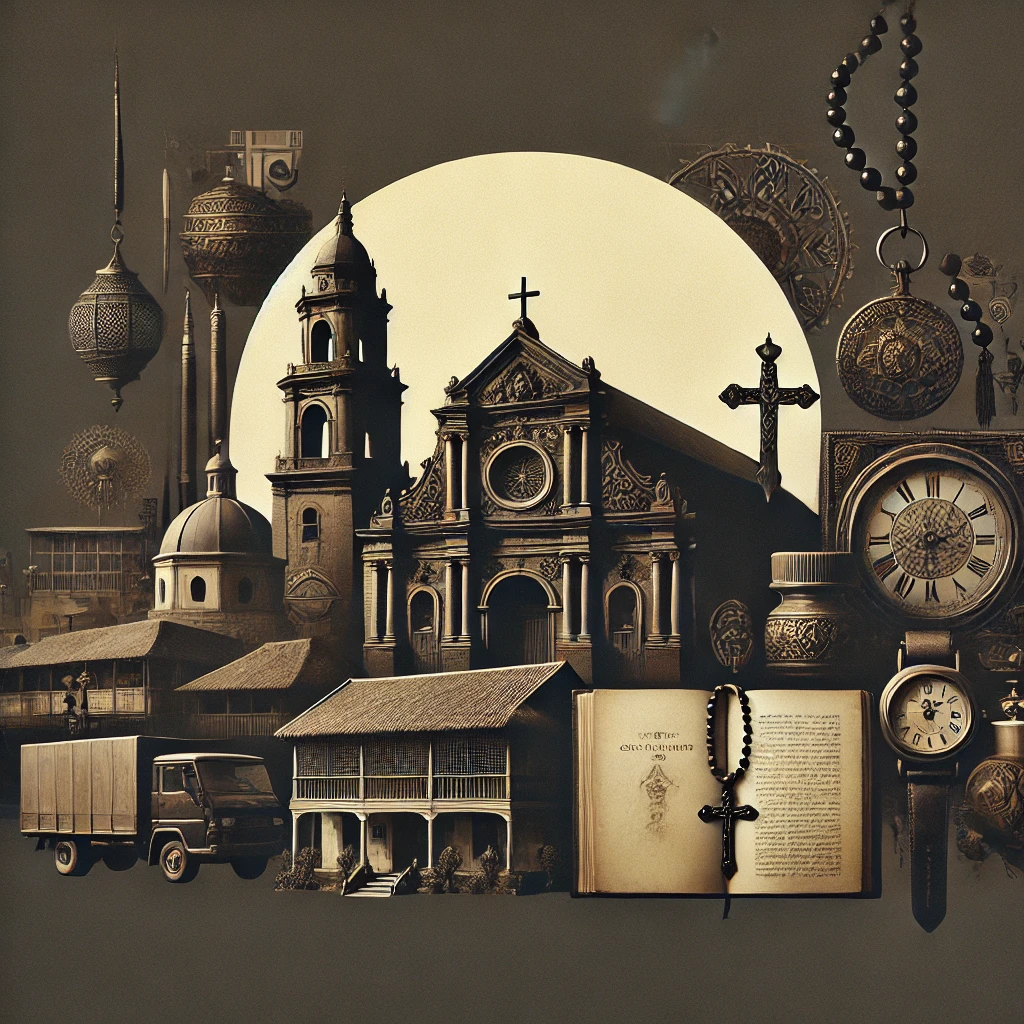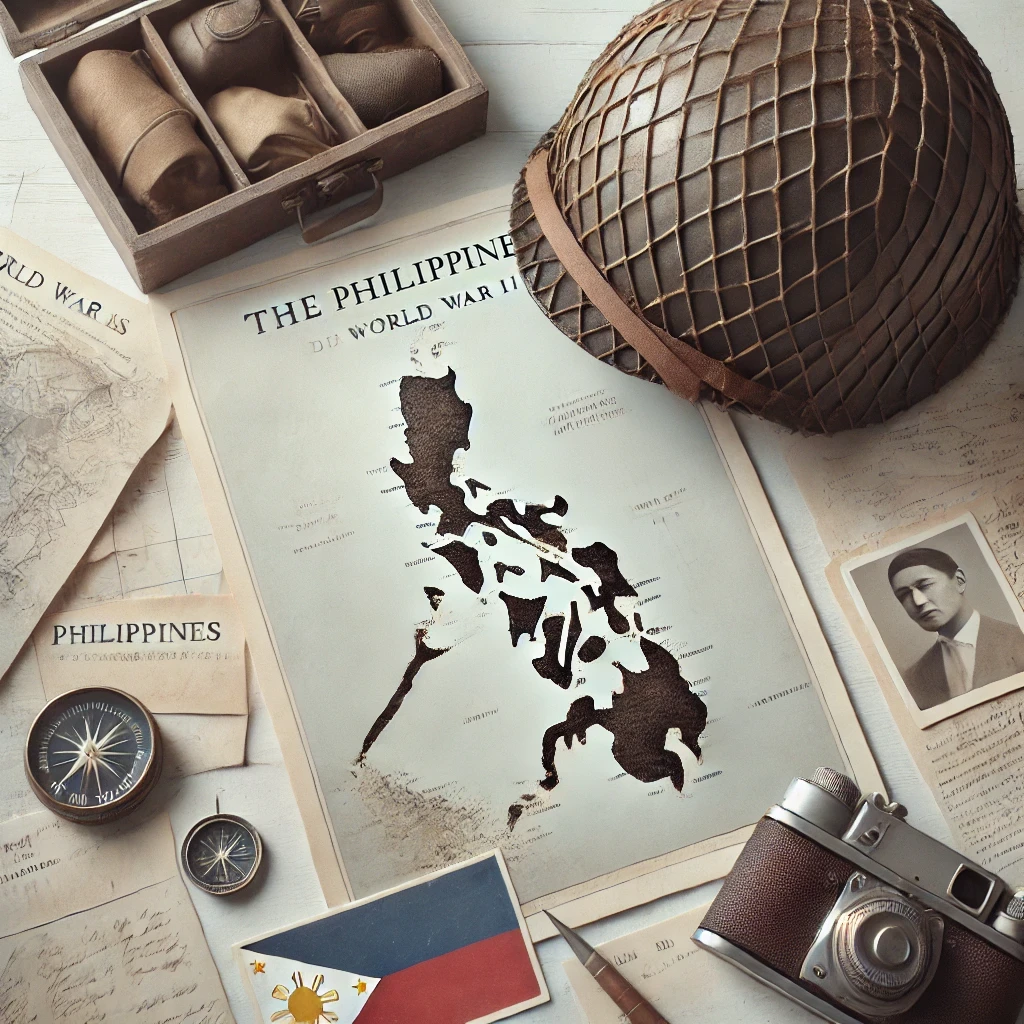Have you ever wondered what it takes for a people to rise up against centuries of colonial rule? To risk everything for the chance at freedom and self-determination? The Philippine Revolution is a captivating tale of courage, sacrifice, and the indomitable human spirit. It’s a story that resonates with anyone who has ever dreamed of liberty and justice. Let’s dive into this fascinating chapter of history and explore how a nation fought to forge its own destiny.
The seeds of revolution
Picture this: It’s the late 19th century, and the Philippines has been under Spanish colonial rule for over 300 years. The air is thick with tension, and whispers of change are spreading like wildfire. The Filipino people have endured centuries of oppression, exploitation, and cultural suppression. But now, something is different. A new generation of Filipinos, educated and inspired by Enlightenment ideals, is beginning to question the status quo. They’re called the Ilustrados, and they’re about to set in motion a series of events that will change the course of Philippine history forever.
These Ilustrados weren’t content with simply grumbling about their lot in life. They took action. Writers like José Rizal penned powerful novels that exposed the injustices of Spanish rule. His works, “Noli Me Tángere” and “El Filibusterismo,” became rallying cries for reform and awakened a sense of national identity among Filipinos. Meanwhile, others like Marcelo H. del Pilar and Graciano López Jaena used journalism to spread their ideas of freedom and equality. They founded La Solidaridad, a newspaper that became a thorn in the side of Spanish authorities.
But it wasn’t just the educated elite who were feeling the winds of change. Across the archipelago, farmers, workers, and ordinary citizens were growing increasingly frustrated with Spanish abuses. The colonial government’s corrupt practices, unfair taxation, and religious intolerance were pushing people to their breaking point. It was only a matter of time before this simmering discontent would boil over into open rebellion.
The Katipunan: Secret Society to Revolutionary Movement
Birth of a revolutionary organization
In the sweltering heat of Manila in 1892, a group of patriots gathered in secret. Led by Andrés Bonifacio, they founded the Katipunan, a clandestine organization dedicated to achieving Philippine independence through revolution. This wasn’t your average book club or social group – the Katipunan was deadly serious about its goals. Members swore blood oaths, adopted secret codes and symbols, and began preparing for an armed struggle against Spanish rule.
The Katipunan grew rapidly, spreading its message of freedom and equality throughout the islands. Its members came from all walks of life – farmers, workers, intellectuals, and even some members of the clergy. They were united by a common dream: a free and independent Philippines. But organizing a revolution is no easy task. The Katipuneros faced constant danger of discovery and had to operate in utmost secrecy. They distributed revolutionary literature, recruited new members, and stockpiled weapons, all while staying one step ahead of Spanish authorities.
As the Katipunan’s influence grew, so did the tensions within the organization. Some members, like Emilio Aguinaldo, favored a more cautious approach, while others, including Bonifacio, pushed for immediate armed revolt. These internal conflicts would later have significant consequences for the revolution’s direction and leadership. Despite these challenges, the Katipunan continued to gain strength, and by 1896, it was poised to ignite the flame of revolution across the Philippines.
The Cry of Pugad Lawin: Revolution Erupts
The spark that lit the fire
On August 23, 1896, in a place called Pugad Lawin (now part of Quezon City), Andrés Bonifacio and his fellow Katipuneros gathered for a momentous occasion. In a defiant act that would echo through history, they tore up their cédulas (residence certificates) and shouted “Long live the Philippines!” This event, known as the Cry of Pugad Lawin, marked the official beginning of the Philippine Revolution.
The revolution spread like wildfire across Luzon and other parts of the archipelago. Katipunan members and sympathizers rose up against Spanish authorities, attacking government outposts and rallying more Filipinos to their cause. The Spanish colonial government, caught off guard by the scale and ferocity of the uprising, responded with brutal force. They arrested suspected rebels, including José Rizal, who was executed in December 1896, further inflaming Filipino anger and resolve.
The early days of the revolution were marked by both triumphs and setbacks. The revolutionaries scored several significant victories, particularly in the provinces surrounding Manila. However, they also faced challenges in terms of organization, leadership, and resources. The Spanish forces, though outnumbered, had superior weapons and military training. The revolutionaries had to rely on guerrilla tactics, local support, and sheer determination to keep the fight going.
Leadership Struggles and the Tejeros Convention
A revolution divided
As the revolution gained momentum, cracks began to appear in the revolutionary leadership. The Katipunan had grown into a large and diverse movement, and different factions had different ideas about how to proceed. In March 1897, revolutionary leaders convened the Tejeros Convention to establish a revolutionary government and elect its officials. What should have been a moment of unity turned into a bitter power struggle.
Emilio Aguinaldo was elected president of the new revolutionary government, while Andrés Bonifacio, the Katipunan’s founder, was relegated to a minor position. Bonifacio, feeling betrayed and questioning the legitimacy of the elections, withdrew from the convention and established a rival government. This split in the revolutionary leadership had dire consequences. Bonifacio was eventually arrested on Aguinaldo’s orders, tried for treason, and executed in May 1897. This tragic turn of events left a lasting scar on the revolution and continues to be debated by historians to this day.
Despite these internal conflicts, the revolution pressed on. Aguinaldo proved to be a capable military leader, leading the revolutionary forces to several important victories. However, the Spanish were far from defeated. They launched a counteroffensive, retaking lost territory and putting pressure on the revolutionary forces. By late 1897, both sides were exhausted, and negotiations began for a temporary truce.
The Pact of Biak-na-Bato and Its Aftermath
A fragile peace
In December 1897, revolutionary leaders and Spanish authorities signed the Pact of Biak-na-Bato. This agreement called for a ceasefire, amnesty for the rebels, and monetary compensation in exchange for Aguinaldo and other leaders going into exile in Hong Kong. It seemed like the revolution might be coming to an end, but appearances can be deceiving.
The Pact of Biak-na-Bato was fraught with mistrust from the beginning. The Spanish never fully implemented its terms, and fighting continued in various parts of the Philippines. Meanwhile, Aguinaldo and his compatriots used their time in Hong Kong to regroup, plan, and seek international support for their cause. They were particularly interested in gaining the backing of the United States, which was becoming increasingly involved in the region.
As tensions between Spain and the United States escalated over Cuba, Aguinaldo and his fellow exiles saw an opportunity. They began preparing for a return to the Philippines and a renewal of the struggle for independence. Little did they know that events were about to take a dramatic turn that would forever change the course of Philippine history.
The Spanish-American War and Its Impact on the Philippines
A new player enters the game
In April 1898, the United States declared war on Spain, ostensibly to support Cuban independence. However, the conflict quickly spread to the Spanish colony of the Philippines. U.S. Commodore George Dewey’s fleet sailed into Manila Bay on May 1, 1898, and destroyed the Spanish naval forces in a decisive battle. This unexpected turn of events opened up new possibilities for the Philippine revolutionaries.
Emilio Aguinaldo, with the support of the Americans, returned to the Philippines in May 1898 to resume leadership of the revolution. He believed that the United States would support Philippine independence once Spain was defeated. The revolutionary forces, reinvigorated by American support and the weakening of Spanish power, made rapid gains across the country. On June 12, 1898, Aguinaldo proclaimed Philippine independence in Kawit, Cavite, unfurling the Philippine flag for the first time.
The momentum seemed to be on the side of the Filipino revolutionaries. They established a revolutionary government, drafted a constitution, and began setting up the institutions of an independent state. However, their joy would be short-lived. Unbeknownst to Aguinaldo and his compatriots, the United States had other plans for the Philippines.
From Spanish to American Rule: The Treaty of Paris
A bitter twist of fate
As 1898 drew to a close, representatives from Spain and the United States met in Paris to negotiate the end of their war. The resulting Treaty of Paris, signed on December 10, 1898, would have profound consequences for the Philippines. In exchange for $20 million, Spain ceded control of the Philippines, along with Puerto Rico and Guam, to the United States. The Filipino revolutionaries, who had fought so hard for their independence, were not even invited to the negotiations.
The news of the treaty came as a shock to Aguinaldo and the Philippine revolutionary government. They had believed that the United States would support their bid for independence, but now it seemed that they had merely traded one colonial master for another. Tensions began to rise between the Filipino forces and the American troops stationed in the Philippines. The stage was set for a new conflict – one that would test the resolve of the Filipino people once again.
The Treaty of Paris marked a turning point in Philippine history. It dashed the hopes of immediate independence and set the stage for decades of American colonial rule. However, it also sparked a new phase in the Filipino struggle for self-determination. The revolutionary spirit that had been kindled against Spanish rule would now be directed towards resisting American colonization.
The Philippine-American War: A New Fight for Freedom
From allies to adversaries
The uneasy peace between Filipino revolutionaries and American forces didn’t last long. On February 4, 1899, fighting broke out between American troops and Filipino soldiers near Manila. This incident marked the beginning of the Philippine-American War, a conflict that would last for over three years and result in hundreds of thousands of Filipino casualties.
The war was characterized by fierce fighting, guerrilla warfare, and, sadly, atrocities on both sides. The American forces, with their superior technology and resources, gradually gained the upper hand. They employed a strategy of “attraction and chastisement,” combining military force with efforts to win over the Filipino population through education and infrastructure projects. The Filipino revolutionaries, led by Aguinaldo, fought bravely but were eventually outmatched.
Despite the odds against them, Filipino resistance continued. Even after Aguinaldo was captured in 1901 and swore allegiance to the United States, other leaders like Miguel Malvar and Macario Sakay carried on the fight. The conflict officially ended in 1902, but sporadic resistance continued for years afterward, particularly in regions like Mindanao and the Cordilleras.
The Legacy of the Philippine Revolution
A dream deferred but not defeated
Though the Philippine Revolution and the subsequent Philippine-American War didn’t result in immediate independence, their impact on Philippine society and national identity cannot be overstated. The revolution awakened a sense of Filipino nationhood that transcended regional and ethnic boundaries. It demonstrated that the Filipino people were capable of uniting and fighting for a common cause.
The ideals of the revolution – freedom, equality, and self-determination – continued to inspire generations of Filipinos. The experiences and lessons of this period shaped Philippine politics, culture, and society in profound ways. Leaders like Manuel Quezon, who would later become the first president of the Philippine Commonwealth, cut their political teeth during this revolutionary era.
Moreover, the revolution and its aftermath forced the United States to grapple with its role as a colonial power. American policies in the Philippines, while often paternalistic, also included efforts to prepare the country for eventual self-governance. This included investments in education, infrastructure, and democratic institutions that would later form the foundation of an independent Philippine state.
From Revolution to Independence: The Long Road to Freedom
The dream realized
The story of Philippine independence didn’t end with the American victory in 1902. The struggle continued through peaceful means, with Filipino leaders pushing for greater autonomy and eventual independence. The Jones Law of 1916 promised eventual independence, and the Tydings-McDuffie Act of 1934 provided for a ten-year transition period to full sovereignty.
World War II intervened, bringing Japanese occupation and more hardship to the Philippines. But even this dark period couldn’t extinguish the flame of Filipino nationalism. When independence was finally granted on July 4, 1946, it was the culmination of a journey that had begun with the revolution half a century earlier.
The independent Philippines faced numerous challenges – rebuilding from the war, developing its economy, and navigating the complexities of Cold War geopolitics. But it did so as a sovereign nation, with institutions and a national identity forged in the crucible of revolution and resistance.
Remembering the Revolution
As we look back on the Philippine Revolution and its aftermath, we’re reminded of the power of human determination and the enduring appeal of freedom. The revolutionaries of 1896 may not have lived to see their dream of independence fully realized, but their sacrifices paved the way for future generations. Their story is a testament to the resilience of the human spirit and the strength of a people united by a common cause.
Today, as the Philippines continues to face new challenges and opportunities, the legacy of the revolution remains relevant. It reminds us of the value of freedom, the importance of national unity, and the ongoing responsibility of each generation to build upon the sacrifices of those who came before. The Philippine Revolution may have ended over a century ago, but its spirit lives on in the hearts of Filipinos everywhere.
So the next time you see the Philippine flag waving proudly in the breeze, take a moment to remember the brave men and women who fought for the ideals it represents. Their story is not just Philippine history – it’s a universal tale of the human quest for dignity, justice, and self-determination. And in that sense, it belongs to all of us.
Disclaimer: This blog post is intended to provide a general overview of the Philippine Revolution and its aftermath. While every effort has been made to ensure accuracy, historical events can be subject to varying interpretations. Readers are encouraged to consult primary sources and academic works for more detailed information. If you notice any inaccuracies in this post, please report them so we can correct them promptly.




